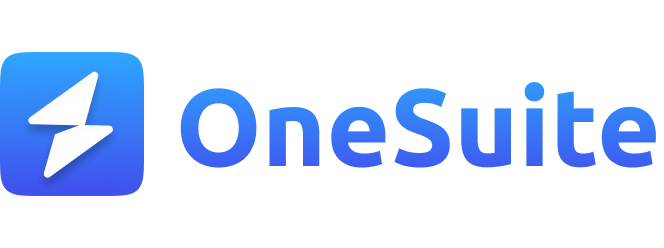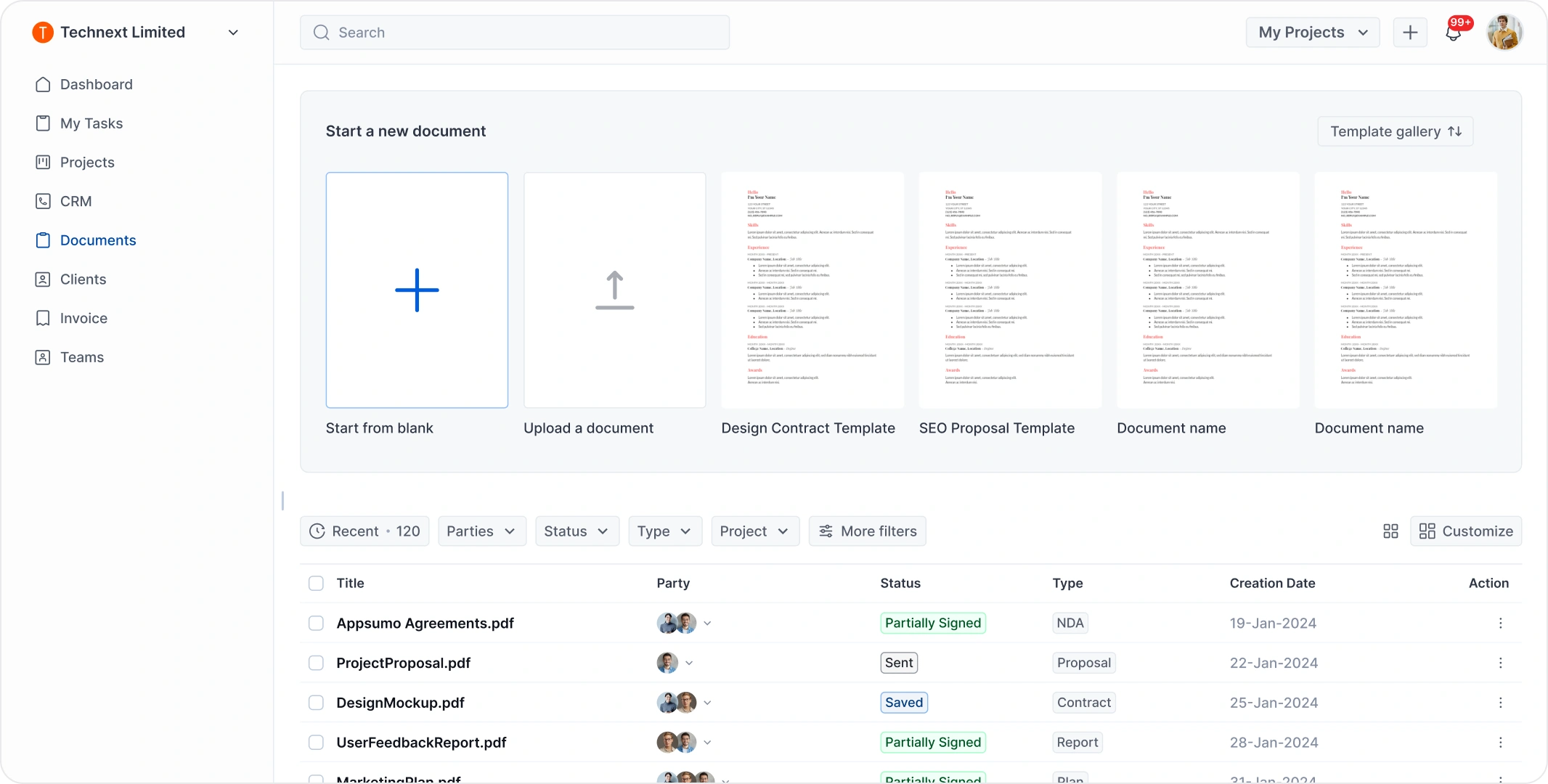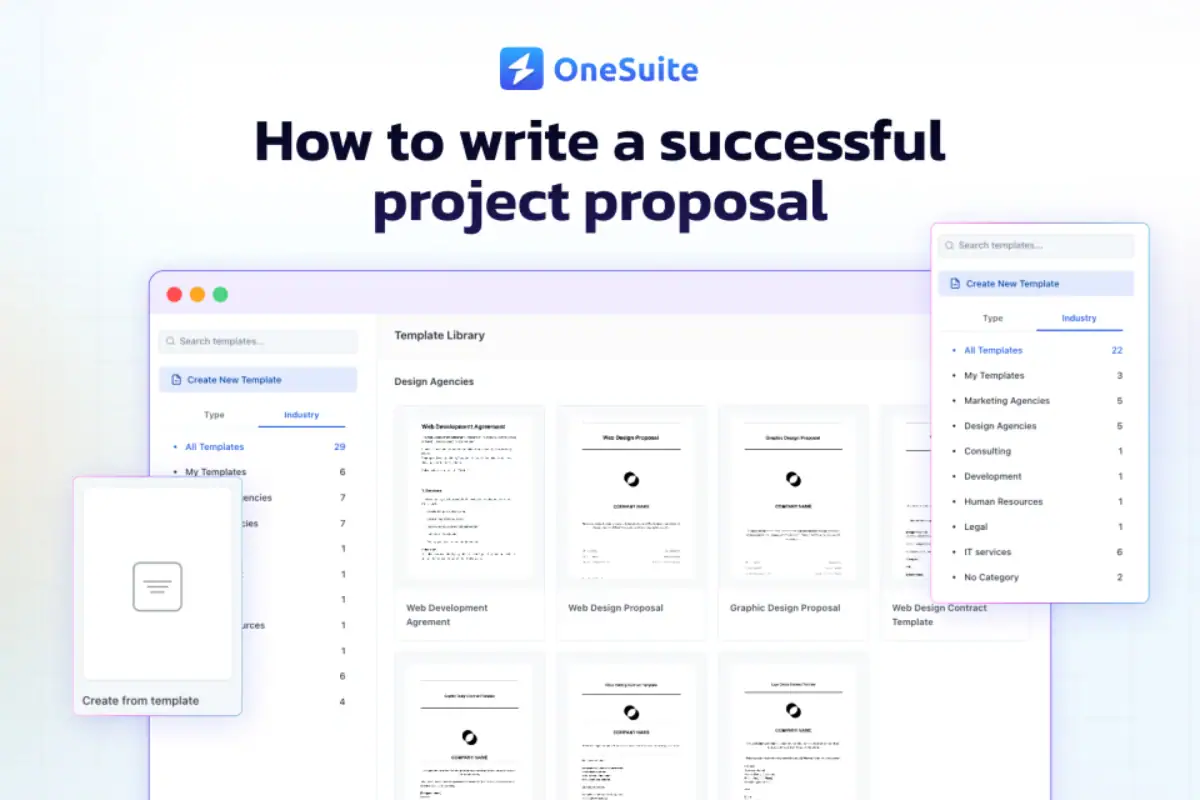
Key Takeaways
“You can fix anything but a blank page.” – Nora Roberts
As a digital business owner, securing sales and building strong relationships with stakeholders is key to growth. But before you can achieve success, you need to land your projects.
After the initial meetings with potential clients, the next critical step is crafting a well-structured project proposal. This proposal serves as a roadmap, outlining your business plan, timeline, invoicing details, and more, all in a professional template that clearly communicates your approach.
In this article, we’ll guide you through how to write a compelling project proposal template, highlight the key elements to include, and share tips to help you win that next big project and build your dream business.
What is a project proposal?
A project proposal is a comprehensive document that outlines the details of a project from start to finish. It defines the project’s goals, requirements, timeline, and expected outcomes, offering a clear plan for the service provider and client.
The main purpose of a project proposal is to establish a mutual understanding between the service provider and client, ensuring both parties are aligned on expectations. It serves as a roadmap for project execution, clarifying roles, responsibilities, and deliverables.
Over the last six years, the average success rate for winning project proposals worldwide, specifically in the digital business and RFPs (Request for Proposals), has hovered around 45%. The highest success rate in this period occurred in 2021, reaching 44%.
The data visualized below showcases the trends and fluctuations in project proposal win rates over the years.
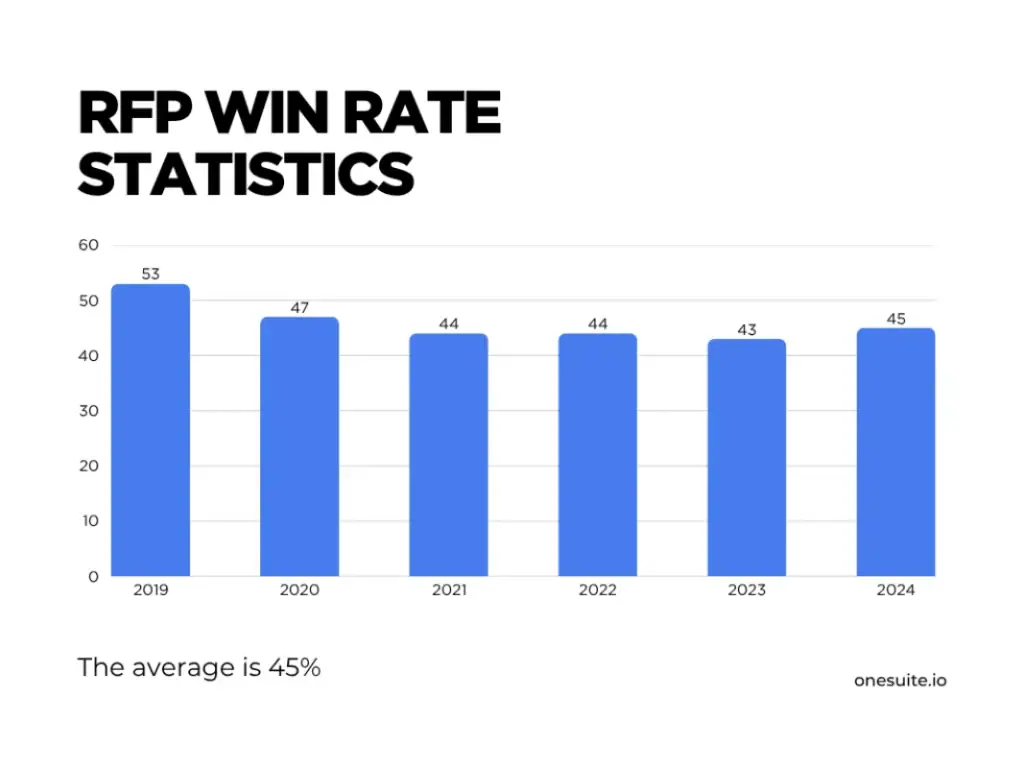
In short, a project proposal is a critical tool for ensuring successful project execution and client satisfaction.
Types of Project Proposals
When preparing a project proposal, it’s essential to choose the right type that aligns with the industry and context of your project.
Below are six key types of project proposals, each with its own specific structure and purpose:
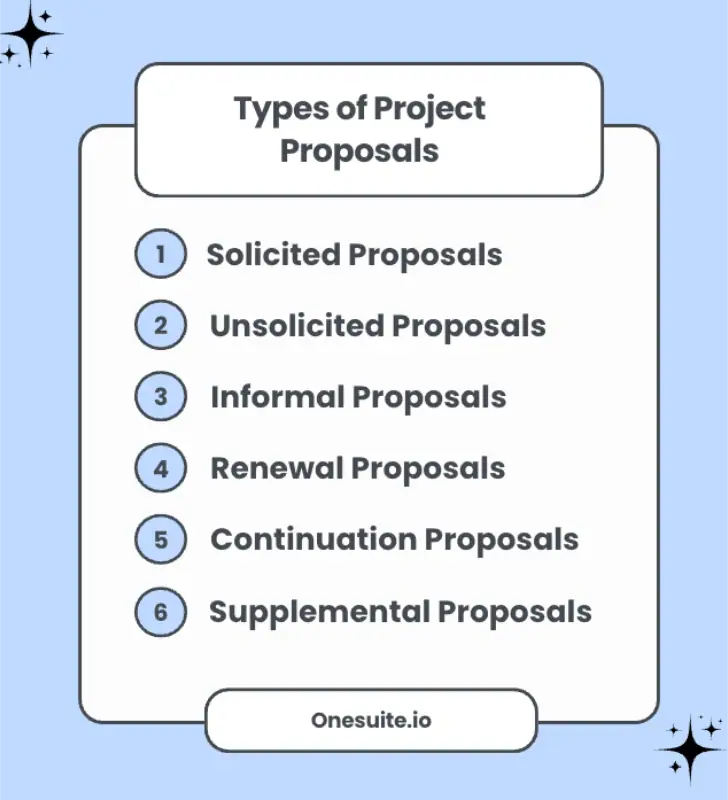
1. Solicited Proposals: These are submitted in response to a formal request, such as an RFP, RFI, or RFQ. They are highly competitive and require strict adherence to submission guidelines, scope, and evaluation criteria.
2. Unsolicited Proposals: Initiated by the proposer, these proposals identify a potential need or opportunity for an organization that hasn’t requested a solution. They must be compelling and demonstrate clear value to catch the organization’s attention.
3. Informal Proposals: Less detailed and more conversational, informal proposals are used for smaller or internal projects. They focus on the core idea rather than exhaustive specifics and formalities.
4. Renewal Proposals: These proposals are made when a project is approaching its funding end but requires continued support. They highlight past successes and justify the need for additional funding or support.
5. Continuation Proposals: Used for ongoing projects that need continued funding without significant changes. These proposals are focused on proving that the project has been effective and should continue as planned.
6. Supplemental Proposals: These are submitted when unforeseen challenges or new opportunities arise, requiring additional resources or changes to the original project plan to meet goals.
How to Write a Project Proposal: A Step-by-Step Guide
As Ernest Hemingway once said, “As a writer, you should not judge. You should understand.”
In the same way, when writing a project proposal, the goal is not to judge the client’s business but to understand their needs. A well-structured proposal showcases your understanding of the client’s challenges and presents a clear solution.
Below is a step-by-step guide to help you write a winning project proposal :
1. Understand the Client’s Needs
When you first meet or email the client, they will describe their business problem. Listen carefully and take detailed notes on their concerns and challenges. This is the foundation of your proposal. Understanding the client’s needs will allow you to empathize and offer a tailored solution that fits their business.
2. Research and Plan
After understanding the problem, you need to research the client’s business and industry. Draw on your previous work experience and new research to develop a strategy that addresses their unique challenges.
- How to solve the problem: What solutions can you offer?
- Project specifics: Which tasks need to be completed, and how long will each take?
- Team involvement: Who will be working on the project, and what are their roles?
- Strategies and tools: What methods and technologies will you use?
Create a clear, actionable plan that aligns with your client’s goals.
3. Create a Clear Structure
When creating a proposal template, it’s essential to use a well-structured format of proposal writing. To make the process easier, you can search for free proposal templates available online. These templates are helpful for freelancers and agency owners and ensure that your proposal covers all essential aspects.
Below is a breakdown of the key sections that should be included in every proposal, which you can fill with specific client details:
- Project Overview
- Problem Statement
- Solution Strategy
- Deliverables
- Timeline
- Budget
- Team and Roles
- Risk Assessment
By using a template with these core sections, you can ensure that your proposal is comprehensive and organized. Onesuite offers free proposal templates for all types of businesses.
Choose the template that best suits your project, and customize it by filling in the specific details related to your client and the project.
4. Write the Executive Summary
The Executive Summary should concisely summarize your understanding of the client’s problem and how you plan to solve it. This is where you establish your expertise, convey your empathy, and assure the client that you have the right solution.
- State the problem clearly.
- Explain how your solution will address the client’s needs and goals.
- Highlight your approach and why it is the best fit.
5. Define the Scope and Methodology
When drafting the proposal, clearly define the scope of work to avoid any misunderstandings. This section should lay out exactly what will be done, how it will be done, and what the client can expect throughout the project.
Be specific, transparent, and detailed to ensure clarity for both you and the client.
- What’s included: List all tasks, deliverables, and milestones.
- What’s not included: Be clear about any limitations or exclusions.
- Timeline: Provide a breakdown of when each phase will occur.
- Methodology: Explain the approach you’ll use to solve the client’s problem.
See Also: Use Onesuite Kanban for easy project management. It’s the best task management software for freelancers and digital agency owners. With Onesuite, you can easily track tasks, manage deadlines, and stay organized—all in one simple, user-friendly tool.
This structure helps ensure that both you and the client are aligned on what’s being done, when, and how, reducing the risk of misunderstandings and ensuring a smoother project execution.
6. Budgeting
Be transparent with the budget by breaking it down into phases or deliverables. This ensures the client understands exactly what they’re paying for and builds trust.
- Breakdown: Clearly outline costs for each phase or deliverable ( labor, materials, technology).
- Alignment: Ensure the budget aligns with the project scope and timeline.
- Clarity: Include any additional costs or potential variations to avoid surprises.
This structured approach makes the budget clear and easy to follow for the client.
7. Identify Deliverables
Clearly outline what the client will receive at each stage of the project. Be specific about timelines to set clear expectations.
- Completed Tasks & Milestones: Define each task and milestone to be delivered.
- Reports & Presentations: Specify any key reports, presentations, or documents that will be provided.
- Final Deliverables: Describe the end results or products the client will receive.
Ensure the client understands exactly what to expect and when.
8. Team and Qualifications
Introduce your team and highlight their qualifications, demonstrating that your team is well-equipped to handle the project.
- Key Team Members: List the team members who will be involved in the project.
- Skills & Roles: Explain their relevant expertise and the specific role they will play in the project.
This builds confidence by showing the client that they’re working with experienced professionals.
10. Set Measurable Outcomes
Define Key Performance Indicators (KPIs) to track the project’s success. This allows both you and the client to evaluate progress effectively.
- KPIs: List specific metrics that will measure the project’s performance.
- Measurement: Describe how you will monitor and track results (e.g., data analysis, client feedback, performance reports).
By defining clear KPIs, you ensure that the client can easily see how success will be measured throughout the project.
11. Proofread
After writing your proposal, always proofread it carefully.
- Check for Errors: Look for spelling, grammar, or punctuation mistakes.
- Ensure Clarity: Make sure the language is clear, concise, and precise.
- Structure: Ensure the proposal flows logically and is easy to follow.
A well-proofread proposal boosts professionalism and ensures your message is communicated clearly.
12. Conclusion
In the final section of your proposal, include a call to action for the client to sign electronically. After the client has reviewed and approved the proposal, schedule a meeting to discuss any final details or questions.
- E-signature: Send the proposal for e-signature to confirm agreement.
- Meeting: Once approved, arrange a meeting with the client to finalize the project plan.
A win-win project is one where both parties are aligned and satisfied. By following this process, you set the stage for a successful collaboration.
By following this step-by-step guide, you’ll be able to craft a compelling project proposal that not only highlights your understanding of the client’s needs but also presents a clear, actionable plan that ensures project success.
What should be included in a proposal?
A strong project proposal gives structure, clarity, and direction. It defines what will be done, why it matters, and how success will be achieved.
Below are the essential elements that every professional proposal template should include — updated and optimized from your earlier structure:
1. Project Overview: Provide a brief summary of the project, explaining its purpose, objectives, and expected impact. This gives the client a clear picture of what the project aims to achieve and why it matters.
2. Problem Statement: Clearly describe the problem or opportunity the project will address. Use simple, factual language to show you understand the client’s challenge and why solving it is important for their business or organization.
3. Solution Strategy: Present your action plan to solve the client’s problem. Outline your methodology, tools, and processes, explaining how your approach will deliver effective results. Each method should connect to a clear benefit for the client.
4. Deliverables: List all tangible outputs and milestones. Be precise about what will be delivered and when. Examples include reports, designs, prototypes, training materials, or final project outputs.
5. Timeline: Break the project into clear phases with specific deadlines. Include milestones, review dates, and expected completion times for each stage. This shows organization and helps manage expectations.
6. Budget: Provide a detailed, transparent breakdown of costs. Divide expenses by phase or task ( labor, materials, software, operations). Make sure the budget aligns with the project’s scope and timeline to maintain trust.
7. Team and Roles: Introduce the team members involved in the project. Highlight their skills, experience, and responsibilities to assure the client that capable professionals will handle every phase of the work.
8. Risk Assessment: Identify possible risks that could affect project success. Explain how you’ll manage or minimize each one with clear mitigation strategies. This demonstrates foresight and professionalism.
You can use a proposal management platform like Onesuite to create and manage templates easily. It helps freelancers and agencies stay organized, manage multiple projects, and send proposals with built-in e-signature options.
Project Proposal Tips: Best Practices for Success
Crafting a successful project proposal requires more than just presenting your solution—it’s about capturing your audience’s attention, clearly communicating your approach, and aligning with the client’s goals.
A well-structured proposal can be the key to turning a vision into a successful collaboration.
- Branding– Use your agency’s colors, logo, and writing tone to make the proposal reflect your brand’s identity and professionalism.
- Clarity and Conciseness– Write in simple, clear language. Avoid jargon and be direct—your audience should easily understand the key points.
- Know Your Audience- Research your stakeholders. Tailor the proposal to the right decision-makers and ensure it speaks to their needs.
- Professional Writing– Proofread carefully or hire a professional to ensure the proposal is error-free and well-structured.
- Keep It Short– Limit the proposal to one or two pages. Keep it concise while still covering all key points. Add testimonials to strengthen your case.
By following these best practices, you can ensure your project proposal stands out, builds trust, and sets the stage for a successful partnership.
Use OneSuite for Your Next Project Proposal
You already know how to write a project proposal and what to include. Now, make the process easier and faster with OneSuite’s free proposal template.
Why choose OneSuite for your proposal needs? OneSuite is an all-in-one agency management software that includes CRM, project management, document hub, invoicing, and client portals—covering everything from client onboarding to offboarding. It’s a complete solution to streamline client management and solve problems efficiently.
With just a few simple steps, you can create and send your proposal to your client.
Thousands of satisfied customers trust OneSuite. Check out our 5-star reviews on G2 to see why agencies, freelancers, and solo professionals love our platform.
We offer an easy-to-use, affordable solution that’s perfect for mid-level agencies, freelancers, and solo entrepreneurs. Start today with a free 14-day trial of OneSuite!
FAQs
When Should You Write a Project Proposal?
As a freelancer or agency owner, write a project proposal after gathering key details from the client—such as their business, needs, goals, timeline, and budget. Once you have all this information, compile it into a clear, concise proposal that outlines your solution, making it easy for the client to review and approve.
What books should a proposal writer read?
To write a strong proposal, it’s essential to continually improve your proposal writing skills. Here are3 must-read books to help you craft winning proposals:
- “Guide to Proposal Writing” by Jane Geever
- “Persuasive Business Proposals” by Tom Sant
- “Million Dollar Consulting Proposals” by Alan Weiss
These books will give you insights into crafting proposals that are persuasive, clear, and effective.
What words avoid in your proposal template ?
When writing a proposal, it’s important to use clear and simple language. Avoid using buzzwords or jargon that may confuse the client or make the proposal sound over-complicated. Here are some terms to avoid in your proposal:
- Impactful
- Paradigm/New paradigm
- Bandwidth
- Literally
- Optimize
- Compelling
- Dynamic
These words can come across as vague or overused. Stick to straightforward, clear language to communicate your message effectively.
Why Your Proposals Aren’t Winning?
If your proposals aren’t winning, you might be missing some key elements. Here are four common reasons why proposals fail:
- Not Understanding the Client’s Business: You need to understand the client’s business and the problem they’re trying to solve to offer a tailored solution.
- Pricing Issues: Be transparent and realistic with your pricing. Overpricing or underpricing can turn clients away.
- Lack of Clarity: If your proposal isn’t clear, clients will struggle to understand your approach. Make sure everything is straightforward and well-organized.
- Experience and Credibility: Ensure your experience and qualifications are clear. Clients want to know they’re working with someone who can deliver results.
Find a Better Way to Grow
OneSuite streamlines projects, clients, and payments in one place, making growth hassle-free.
